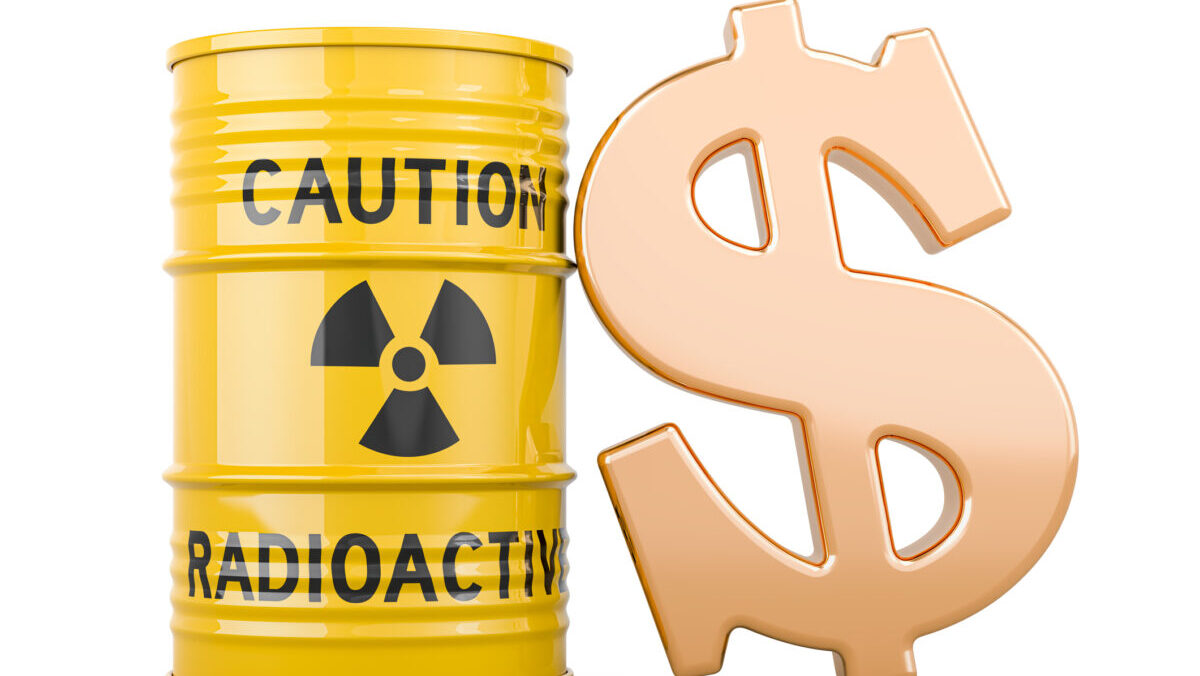Uranium closing on the all time high of US$149/lb seen only briefly in 2007
“… there’s not actually that many projects that are ready to respond to this price at the moment”: Guy Keller
Keller’s uranium picks: BOE, PDN, DVX, AGE, BMN, LOT, DYL, BSN
MoneyTalks is Stockhead’s regular recap of the ASX stocks, sectors and trends that fund managers and analysts are looking at right now.
Today we hear from Guy Keller, Tribeca Nuclear Opportunities Strategy fund manager.
Since launching six years ago — when the price of uranium was so low a retail investor wouldn’t touch a yellowcake stock with a 10 foot pole — Tribeca’s Nuclear Opportunities Strategy has enjoyed a 565% gain.
Running in line with surging prices for the nuclear fuel, it’s been a year of vindication for the tactic employed by fund manager Guy Keller, who has emerged as one of the leading Australian voices on the long depressed energy commodity.
U3O8 spot prices finally broke the shackles in 2023 by rising 88% to US$91.50/lb, spurred by a decade of underinvestment due to bargain basement prices, the start of a new multi-year contracting cycle, and a rush to extend the life of existing nuclear plants or build new capacity.
They have since continued to moon, running to ~US$106/lb this week.
COMEX UxC #Uranium #U3O8 Futures soared +$1.75 today to a new 16-year high of $105.75 Up +500% from its Nov 2016 lowas #Nuclear fuel continues to beat out all competition as World’s Top Performing Commodity #NetZero #EnergySecurity… pic.twitter.com/IZeFaFOwIk
— John Quakes (@quakes99) January 17, 2024
Keller told Stockhead there was no reason to think the price could not go higher, closing on the all time high of US$149/lb seen only briefly in 2007 before the Global Financial Crisis put a dagger through the heart of demand.
Generally higher prices mean the start of new operations in response, or a ramp up in supply from incumbent producers. But that isn’t happening, because permitting uranium projects is a long, uncertain and complex process, and majors Cameco and Kazatomprom have struggled to meet production targets.
“Just because the price has gone from US$60 to US$100 in a short period of time … doesn’t mean that a government department approving a permit is going to move any faster,” Keller said.
“This is what the market’s realising is there’s not actually that many projects that are ready to respond to this price at the moment.
“They’re all going through a process that takes time.
“To the point there. Where does the price go? The question should be what’s going to happen to stop the price going up any further?
“Because here we are at a price when, in theory, a heap of development projects should be able to come to market and they’re not because they don’t have the ducks all lined up.”
Is US$175/lb a possibility?
Of all the projects due to come online some time this decade the only one of real market moving size is NexGen Energy’s (ASX:NXG) Arrow project in Canada’s famously high grade Athabasca Basin, which at its height is expected to produce around 29Mlbpa, making it the largest single mine producer at its peak.
But it’s still at the front end engineering design stage, and Keller says by the time it comes to market “it’s needed anyway”.
“Where does that mean the price settles? Not lower,” Keller said.
“I was out at the end of the last year saying there’ll be a US$175/lb price at some stage in 2024, everyone laughed at me and thought I was an idiot.
“Why can’t it get there? I don’t see anything stopping it getting there.”
Last year was the largest contracting year in over a decade for nuclear utilities — somewhere in the vicinity of 160Mlb.
However …
“Regardless of what the actual number for 2023 works out to be, it’s still going to be below replacement rate contracting,” Keller said.
“Depending on who you talk to, utilities consume 180-195Mlb a year, so to replace what they’re burning each year they need to be contracting around that 180Mlb.
“I suspect 2024 will be closer to replacement because it has to be, but what you have got to remember as well is utility contracting cycles last a few years. It’s not just a destock-restock like you see in China with other commodities that lasts three to six months.
“They spend two, three, four or five years doing it and they’re contracting for 5-10-15-20 years.”
In recent years, utilities have been able to dip into the spot market to top up on cheap material after prices fell below US$20/lb. Now higher spot prices and low liquidity after producers, physical trusts like Sprott and hedge funds hoovered up available pounds in recent years have dramatically tightened the spot trade in U3O8.
It could be like lithium
While lithium producers are licking their wounds on chemical prices dipping below US$15,000/t and spodumene falling under US$1000/t, it wasn’t long ago that they surged over 15 times from their record lows, pulling equities along with them.
Keller said it was a lesson for the sceptics that such booms could be seen in other commodities.
“From the 2020 lows to the highs last year, companies like Core Lithium (ASX:CXO) rallied 14,000%, Pilbara Minerals (ASX:PLS) rallied 4000%,” he noted.
“And everybody was sitting there saying, ‘but that’s lithium so of course it’s going to happen’.
“And I was sitting there at the time saying, ‘but hang on, lithium is rallying on future demand and you’re OK with that’.
“Uranium is actually coming from a position where this is a primary mine supply deficit that’s been in place for 10 plus years.
“We’ve got the largest reactor build program in decades adding future demand that we can’t see a solution for and stocks rally 30% we say it’s done.”
So which ASX stocks does Keller like as the uranium bull movement — at least for now — looks to be on the right track?
Look for stocks with activity afoot
There are few surprises when it comes to the top rated uranium stocks on Keller’s radar. The Tribeca man likes $2.3 billion Boss Energy (ASX:BOE) and $3.7b Paladin Energy (ASX:PDN), both likely to enter production early this year in South Australia and Namibia respectively.
“We’ve been a very big supporter of Boss Energy from the moment we started looking at this sector, and the same people telling me today they can’t buy it at this price, I heard the same thing and $1, at $2, at $3, at $4,” Keller said.
“The fact of the matter is, literally them and Paladin are the only two ASX-listed companies that are going to be able to get themselves in a position to be producing uranium in the short term.
“You have to argue that those two stocks are going to continue to be the darlings of the market. You’re not going to get 1,000% returns like some of these penny stocks will.
“But they’re on the radar of a lot of institutional investors. Those institutional investors six or 12 months ago, were not looking at those two companies nor even looking at the uranium sector so they’ll continue to be supported by that.”
Despite the price run, Keller says value can still be found in stocks which are still at a discount to the levels they hit during a mad rush in September 2021 inspired by Sprott’s entry to uranium spot purchasing.
“I think you’re going to have to really, really pick your stocks to work out what’s going to outperform, so depending on what your appetite is and where you are in the market cap stack and what you’re prepared to do there’s plenty of different options,” Keller said.
“Outside of that next to market group, your obvious group which is your Bannermans (ASX:BMN), Deep Yellow (ASX:DYL), Lotus Resources (ASX:LOT), (you’re looking for) the juniors who are doing things.
“DevEx (ASX:DEV) [and] Alligator Energy (ASX:AGE) are doing things in Australia.
“Basin Energy’s (ASX:BSN) doing things in the Athabasca.
“You’re going to see a whole bunch of ASX [projects] come to the market in the next 3-6 months saying ‘I’m the greatest thing’.
“I look for those explorers that are actually spending my money on the project.
“There’s going to be a lot of noise in that space and I think that’s why you need to try look through that and focus on a few of them where there’s actual project progression happening.”
Guy Keller’s uranium picks
The post MoneyTalks: Tribeca’s Guy Keller doesn’t ask why uranium could hit US$175/lb … he asks why not? appeared first on Stockhead.























+ There are no comments
Add yours